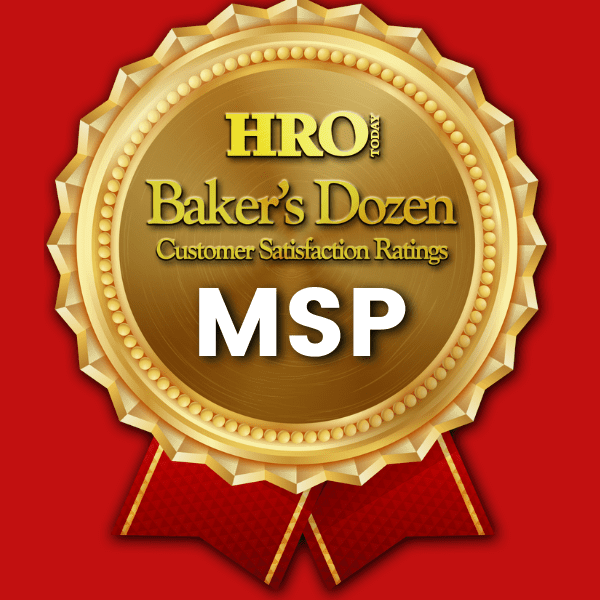Successfully managing remote workers can be achieved with the right planning and tech tools.
In today’s high-tech atmosphere, it’s essential to be able to manage virtual employees effectively. With the right technology, HR executives can ensure that their staff is able to work efficiently from anywhere, without being restricted to nearby offices. There are still a few important things, however, that managers need to keep in mind when utilizing far-flung workers.
According to a recent Gallup survey, 43 percent of U.S. employees said they spent at least some time working remotely in 2016 -four percent more than only five years ago. The number of people going remote is increasing rapidly. Technology has allowed talent to be just as productive at home as they are in the office. In fact, they may be even more so, as they do not have office chatter – or even a lengthy commute -to deal with.
A seamless transition between office staff and remote workers is important. Computers need to be up-to-date and run smoothly; the appropriate platforms must be in place to make sure remote workers are connected to the company server and can collaborate with colleagues.
Social media channels such as Facebook and LinkedIn are commonly used in people’s everyday lives, so it only makes sense to include them in a virtual management strategy. Organizations can actually build their own social media networks to enhance cooperation and engagement. “An enterprise social network allows teams to have online conversations, start one-on-one chats, and quickly find and connect with the right people,” Bertrand Dussert, vice president of HCM transformation and thought leadership at Oracle, says. “Additionally, it makes sharing documents, gathering feedback, and getting in touch with the right people within an organization intuitive and effective.” Internal social media channels that top companies such as Macy’s, T-Mobile, and UBM, reportedly use include Tibbr, Jive, and SocialCast, respectively. These networks allow online meetings, chats, project management solutions, and social discussions.
Apps and trackers can also help connect HR professionals with the workers outside the office. These work-life solutions leverage personal data from social networks and utilize wellness trackers to provide HR staff with unique insights into an individual’s career and life goals. “This holistic view of employees empowers HR departments and managers to pinpoint what motivates employees and how to best empower them in their roles,” Dussert says. These customizable platforms are designed by IT companies for specific organizations and their needs. Popular workplace wellness apps include Keas, a health management device that allows workers to set goals and view activity; Hotseat, which encourages activity and creates competitions between colleagues; and MyFitnessPal, which tracks calories and healthy behavior. All of these can be configured to work for an entire office locally or out of town.
According to mobility statistics by Citrix, the number of devices managed in the enterprise increased 72 percent compared to recent years, and employees typically use three or more devices daily for work activities. Being that almost everyone has smartphone device with them at all times, HR professionals are presented with a convenient opportunity to manage these often hard-to-reach workers. “Not only does mobile make it more convenient for workers but easy access to information also makes employees more satisfied in their jobs since they can be more efficient in their work,” Jeff Corbin, CEO and founder of APPRise Mobile, says. Tech analyst group Gartner has discussed the concept of the “mobile hub” on the smart device, through which content and workplace tools and functions can be aggregated. Mobile hub applications allow employees to accomplish tasks such as scheduling, accessing benefit portals and information, and requesting paid time off.
Home-based contact center company Working Solutions already follows some of these strategies -and more – to create connections between coworkers, clients, and business leaders. “Just because we’re a remote business doesn’t mean we’re ever distant,” says Kim Houlne, the organization’s founder and chairwoman. This “proximity” is achieved partly through open lines of communication: Houlne is online or on the phone, corresponding with them directly about any concerns or issues they may have.
Video also helps to bridge the communication gap: Houlne records YouTube broadcasts from her office to teams across the country. “Employees and agents need to see your face and hear your voice. Being digital lets you cover a lot of distance and connect with many people,” she says.
Video is becoming the medium of choice for employers looking to connect. “Employees [may not] feel connected to their teams and organizations, which can adversely impact morale and workflow. Email as a means to communicate and engage is becoming old-school. The use of video, on the other hand, is on the rise,” says Corbin. “[It’s] becoming more popular as a result of the expansion of bandwidth services, the fact that video costs have decreased, and because the video experience on the mobile device can be excellent -and not to mention convenient.”
At the TRaD (telecommuting, remote, and distributed teams) Works Forum in 2016, companies such as Dell, ADP, Xerox, Clorox, and American Express shared their best practices for managing virtual groups, including:
Establishing trust. Create a level of trust between those who oversee flexible and remote workers and those who seek the benefits of flexible work.
Setting up virtual toolkits. Virtual employees should have the same understanding of company polices as those in the office. Virtual toolkits provide easy access to information on expectations, preferred communication styles, core working hours, daily meetings, and more.
When in doubt, ask questions. For managers and remote workers alike, there is no room on a team for uncertainty. If a concept is unclear, it’s vital for HR to ask questions and to make sure workers feel comfortable asking their bosses questions as well.
FlexJobs and Remote.co hosted the forum and surveyed more than 100 virtual team leaders to find out which tools are the most widely used. According to Brie Reynolds, senior career specialist at FlexJobs, the most commonly used programs on a daily basis include:
• Instant messaging (Slack, Skype, and Google Chat);
• Project management tools (Trello, Pivotal Tracker, and Basecamp); and
• Team collaboration platforms (Yammer and Hipchat).
“All of these tools help managers to communicate with their teams, to keep track of the work being accomplished, and to keep everyone on the same page,” she says.
However, there can be issues when colleagues are not working in the same physical location -technical glitches can arise. Dussert offers a solution for when IT goes awry: “In the case of a malfunction, HR professionals can depend on chatbox voice interaction to help quickly answer employee questions, identify the issue, and provide the right contacts to get them back up and running. This allows employees to fix the issue -no matter what time zone or location they are working from -and prevents HR departments from getting bogged down in manual processes and IT.”
Overall, if a company wants its employees to feel like a part of the team -wherever they are -they need to provide them with constant communication and the tools to succeed. Houlne practices an open-door policy that she says works well: “Candor and unfiltered communications keep a business healthy and open to change.”













